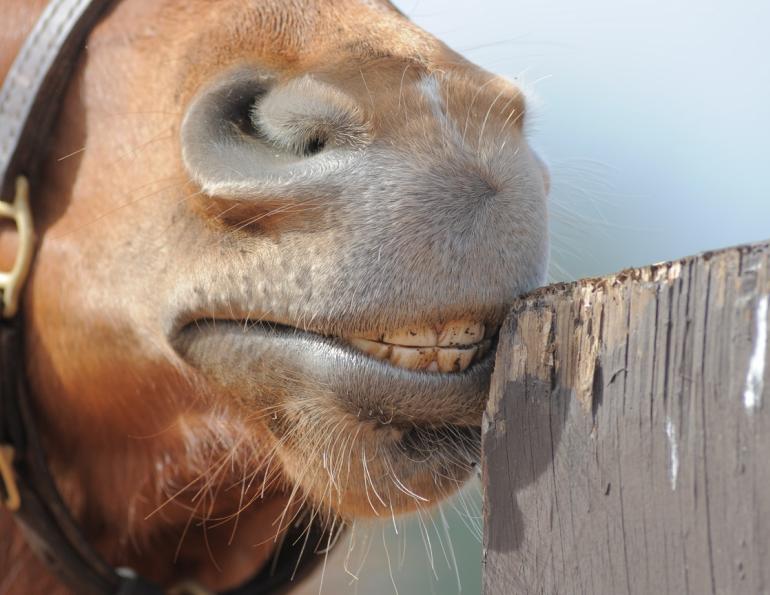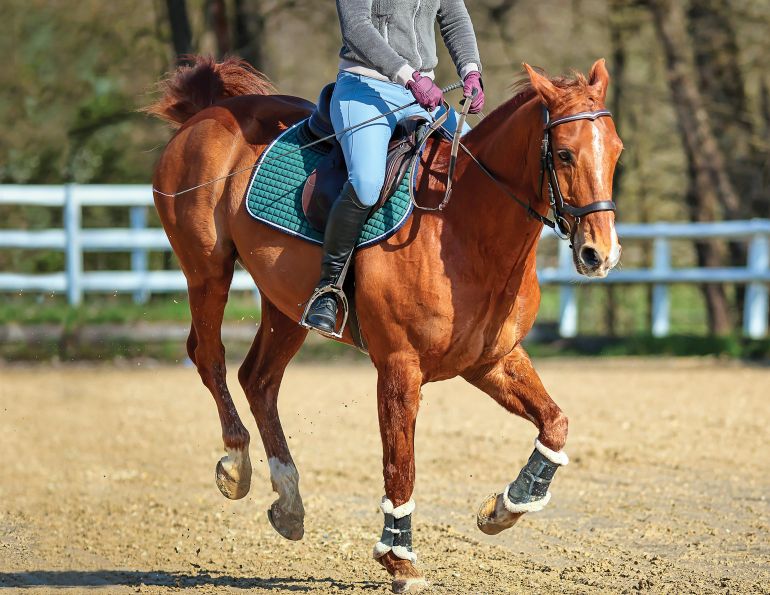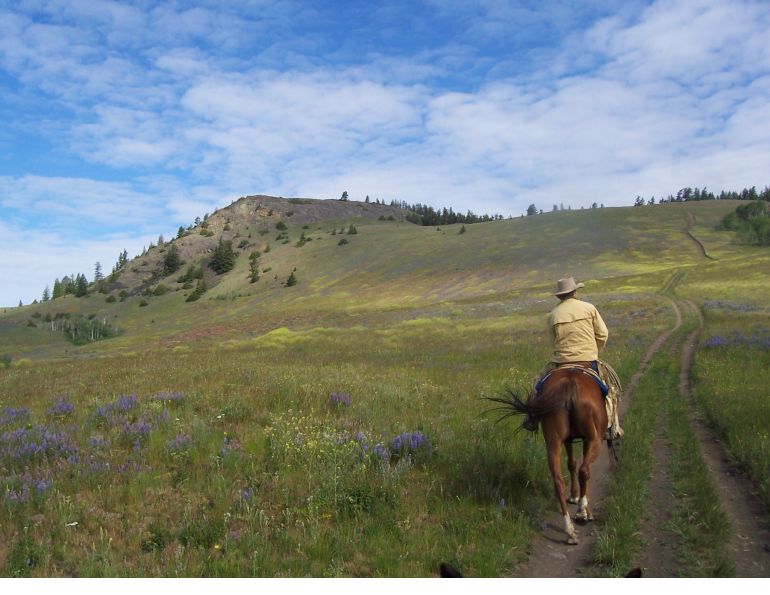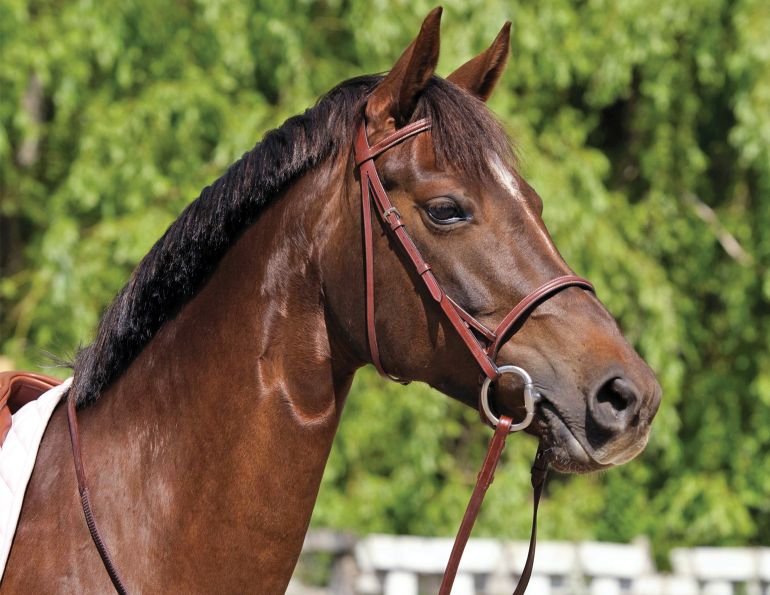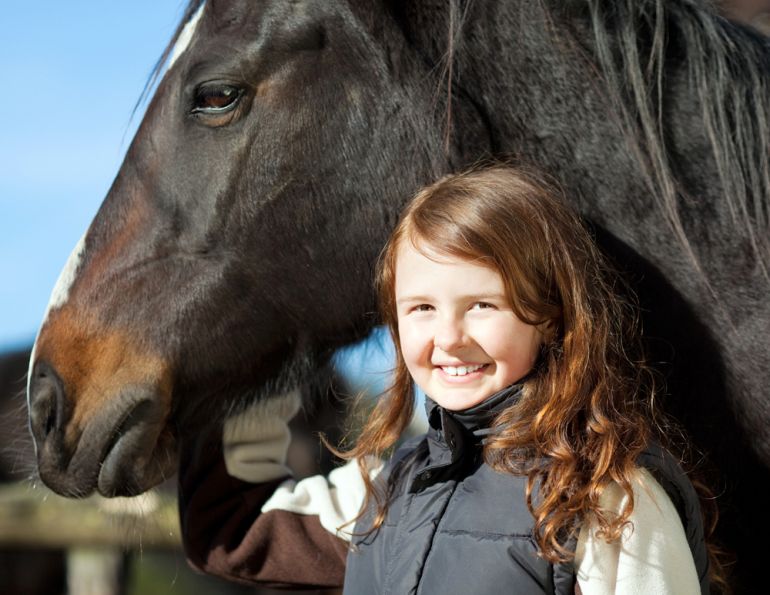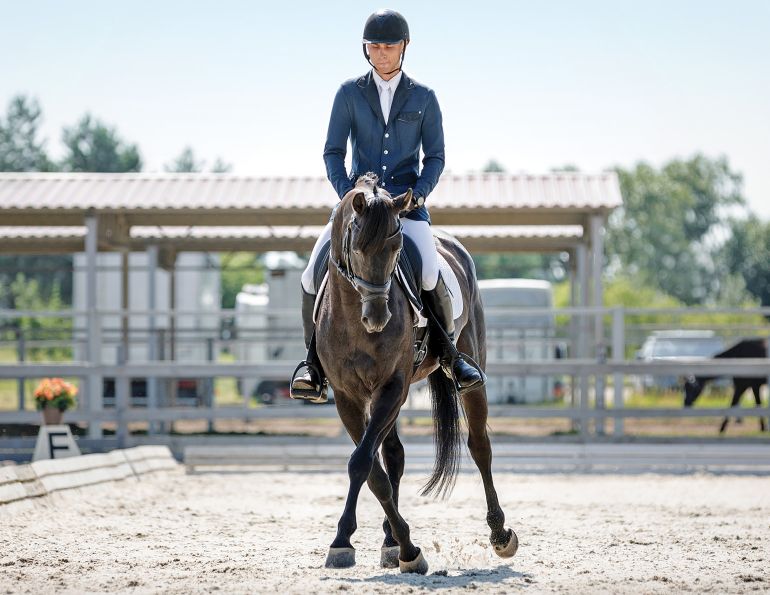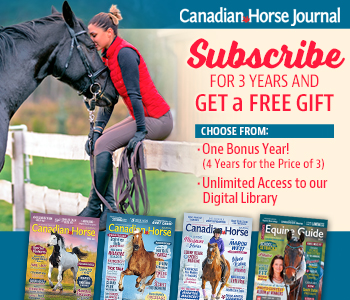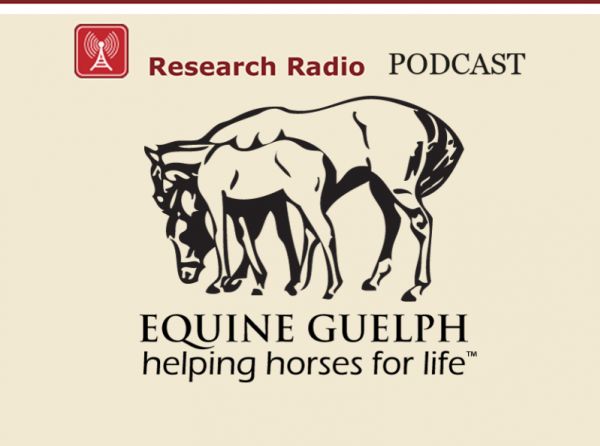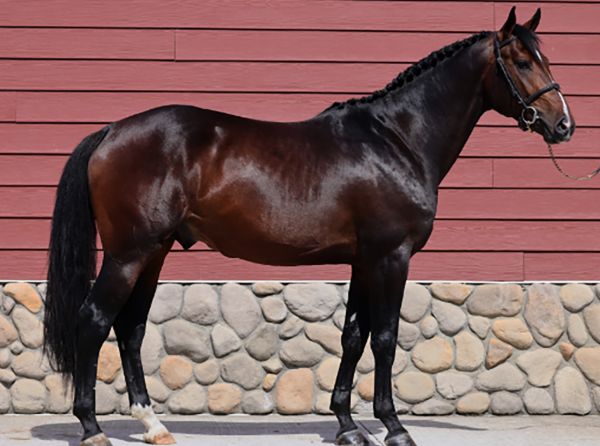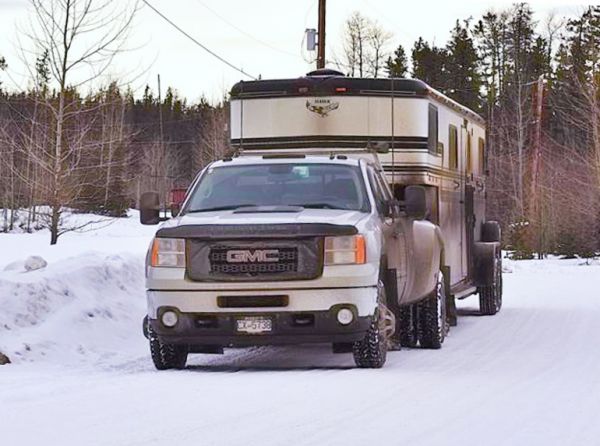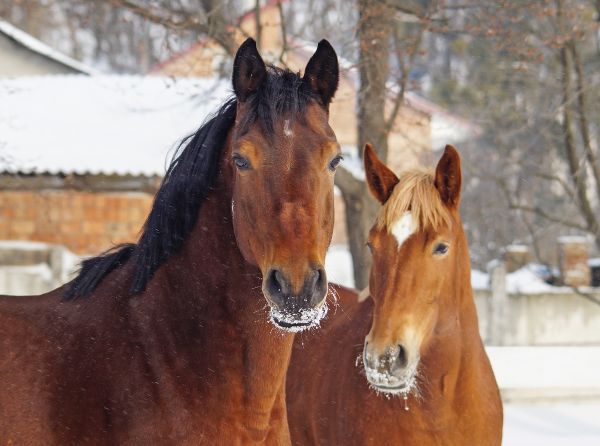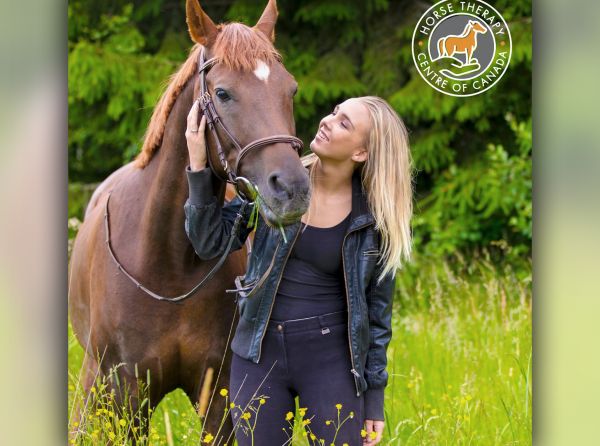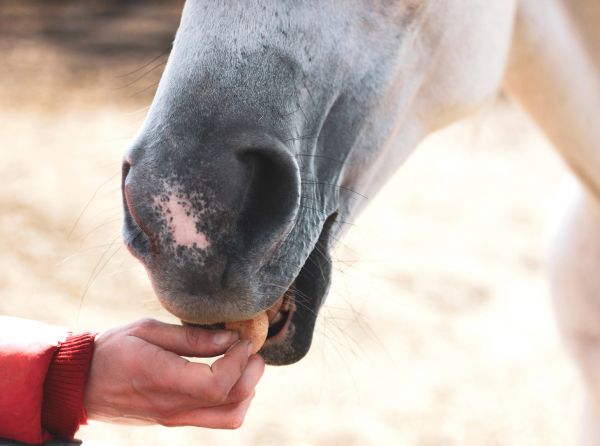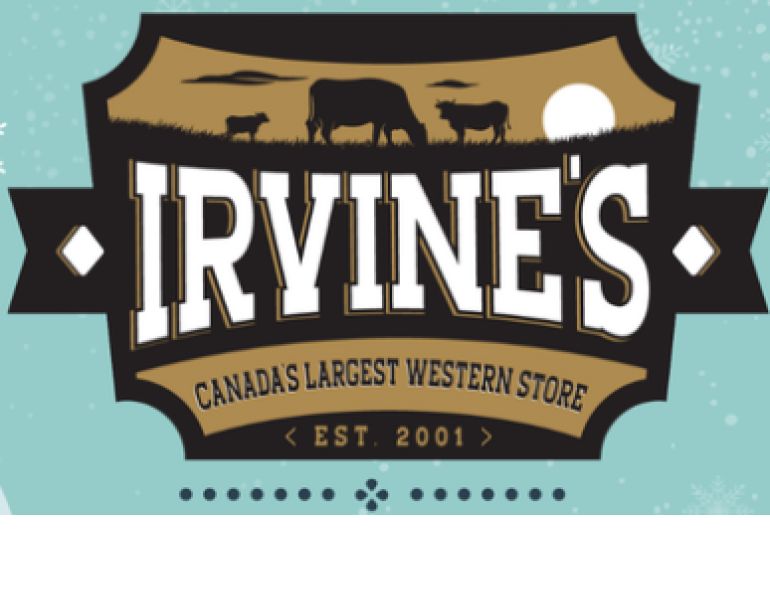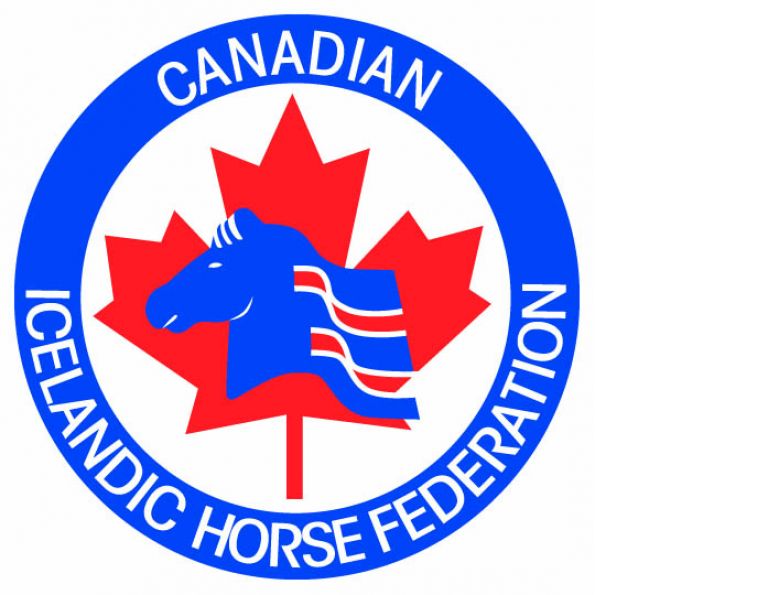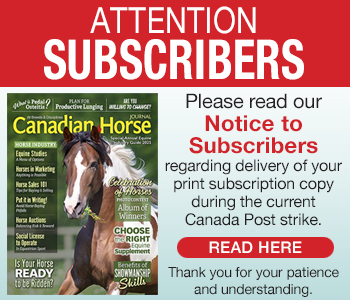By Lindsay Grice
Q How do I ride circles that are perfectly circular? Mine have a tendency to look more like the letter “D” than the letter “O” because my horse seems to be influenced by the direction of the barn.
A Most horses tend to cut in on one half of a circle and “bulge” out on the other half. If your horse has bulging problems, he most likely gets “magnetized” toward the fence, the in-gate, or toward another horse. Comparing your horse to a train, I’ll give you some tips to improve your control and be able to keep your horse on the track of your choice.
1. Define your train track.
The old adage, “If you fail to plan, you plan to fail,” applies here. You must decide the exact path you want your horse to follow. This involves looking ahead and planning your route. I suggest my students make an imaginary dot in the dirt approximately 30 feet ahead of them and direct the horse’s feet to step right on that dot. How deep into the corner do you want to ride? How many feet away from the horse you are passing would you like to be? Would you like your horse to jump exactly in the centre of the fence? Vague plans from the rider produce vague responses from the horse. Imagine your path as a train track and keep your horse between the rails.
2. Direct each train car.
If you visualize your horse’s head as the first car, his neck the second, followed by his shoulders, rib cage, and hips, you need to have the ability to control each section. Usually when a horse is bulging to the outside, the rider pulls on the inside rein. The rein, however, only controls the front train car and the rest of the cars continue to leak out, off the track. Usually with every bulge comes a slowing in pace and you can bet that if your horse is going to break from a canter to a trot, for instance, it will be when he’s being magnetized toward the gate. Control over your horse’s shoulders, ribs, and hips is what you need to realign your train. This can be achieved by exercises such as turns on the forehand and haunches, leg yields, and by making sure your leg and rein cues are clear and distinct so that your horse understands which section of his body you want him to move. Build in this control at the walk first and eventually work up to the canter.
3. Anticipate the bulge.
Knowing that your horse tends to drift towards the barn or overshoot the corner on your approach to a jump, decide to ride the curve straighter instead. I suggest to my students that they ride such a curve as a series of straight lines (resembling a stop sign). Limit the bend in your horse’s body using your outside hand and leg, even going so far as to ride him completely straight (envisioning him between the shafts of a buggy) if he’s a determined bulger. This technique works for riding small circles that your horse would like to “enlarge.”
Using these techniques you should be able to keep your horse on track!
Main article photo: Robin Duncan Photography - To improve your circles, decide the exact path you want your horse to follow, imagine your path as a train track and keep your horse between the rails.





